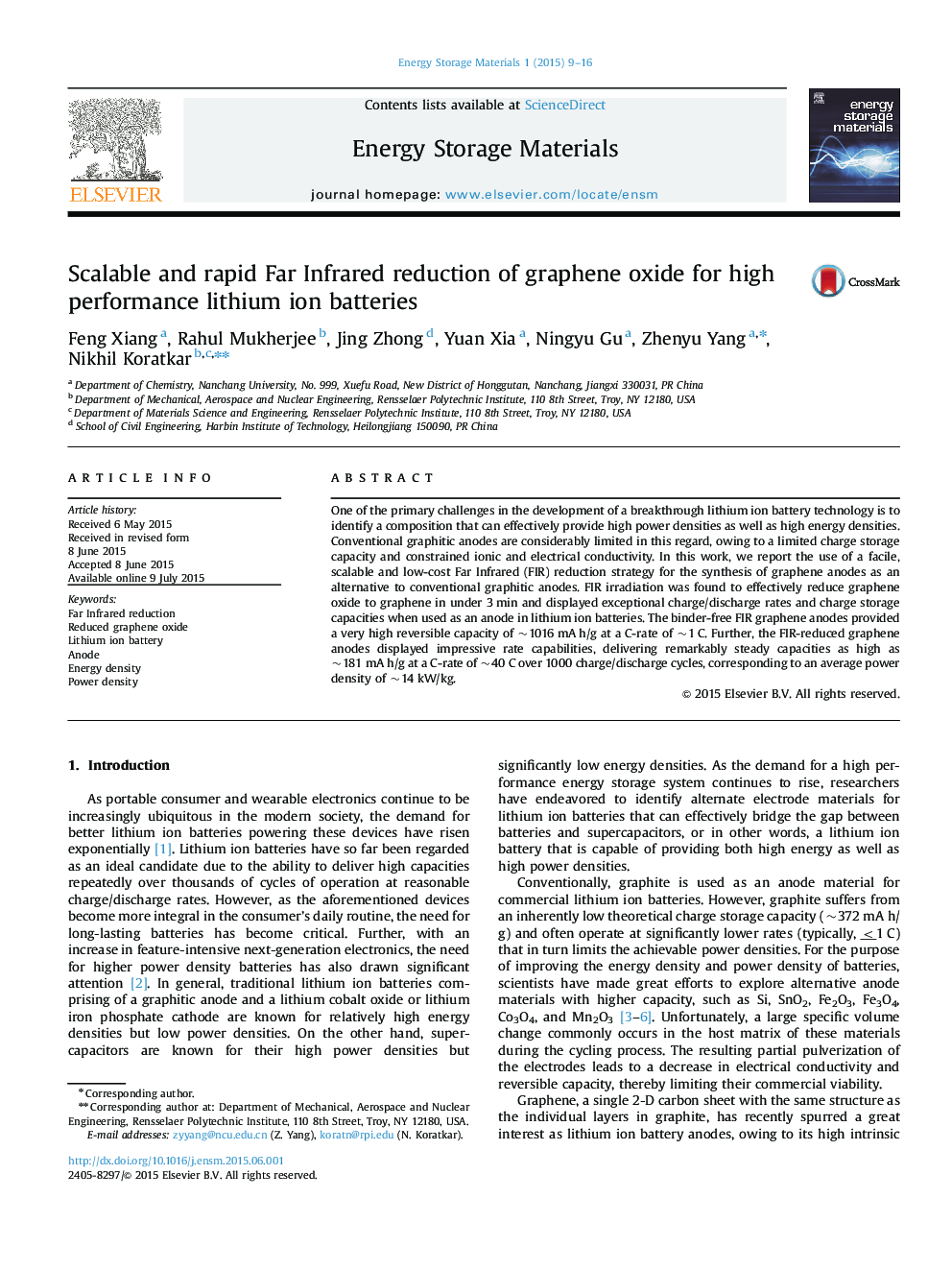| Article ID | Journal | Published Year | Pages | File Type |
|---|---|---|---|---|
| 1564610 | Energy Storage Materials | 2015 | 8 Pages |
Abstract
One of the primary challenges in the development of a breakthrough lithium ion battery technology is to identify a composition that can effectively provide high power densities as well as high energy densities. Conventional graphitic anodes are considerably limited in this regard, owing to a limited charge storage capacity and constrained ionic and electrical conductivity. In this work, we report the use of a facile, scalable and low-cost Far Infrared (FIR) reduction strategy for the synthesis of graphene anodes as an alternative to conventional graphitic anodes. FIR irradiation was found to effectively reduce graphene oxide to graphene in under 3Â min and displayed exceptional charge/discharge rates and charge storage capacities when used as an anode in lithium ion batteries. The binder-free FIR graphene anodes provided a very high reversible capacity of ~1016Â mAÂ h/g at a C-rate of ~1Â C. Further, the FIR-reduced graphene anodes displayed impressive rate capabilities, delivering remarkably steady capacities as high as ~181Â mAÂ h/g at a C-rate of ~40Â C over 1000 charge/discharge cycles, corresponding to an average power density of ~14Â kW/kg.
Related Topics
Physical Sciences and Engineering
Energy
Fuel Technology
Authors
Feng Xiang, Rahul Mukherjee, Jing Zhong, Yuan Xia, Ningyu Gu, Zhenyu Yang, Nikhil Koratkar,
